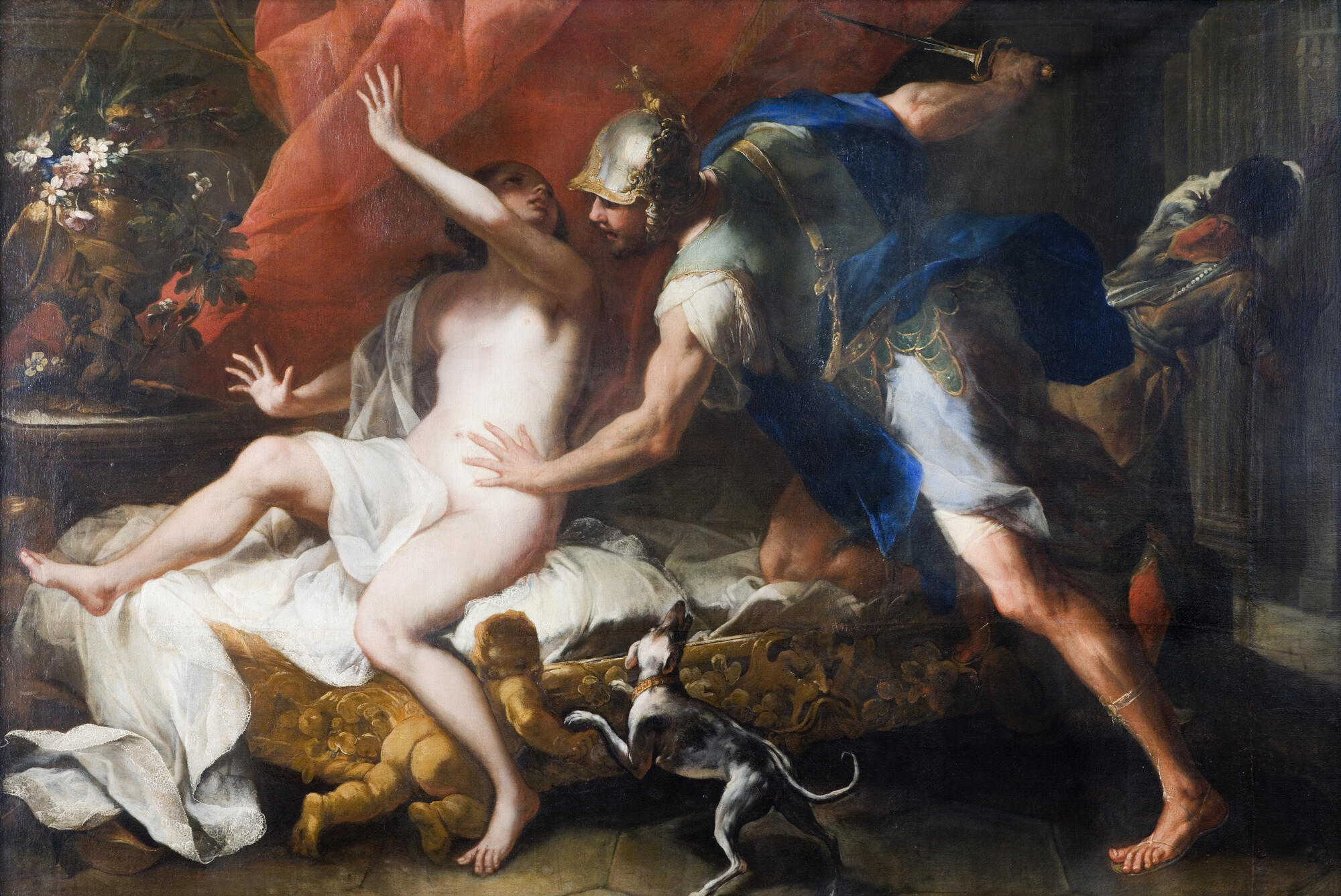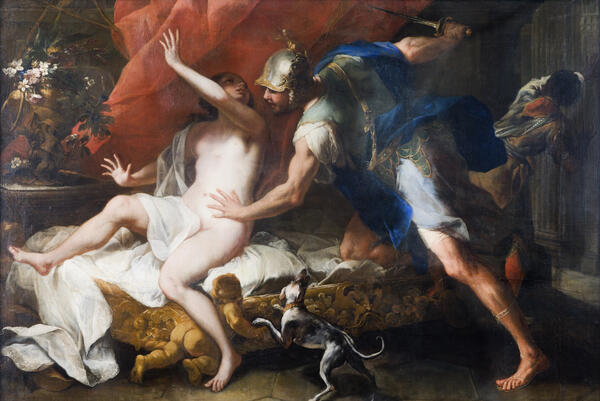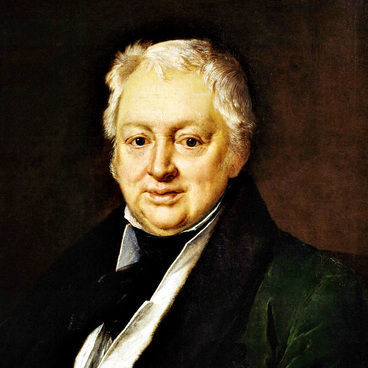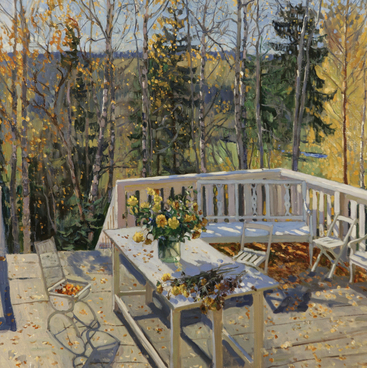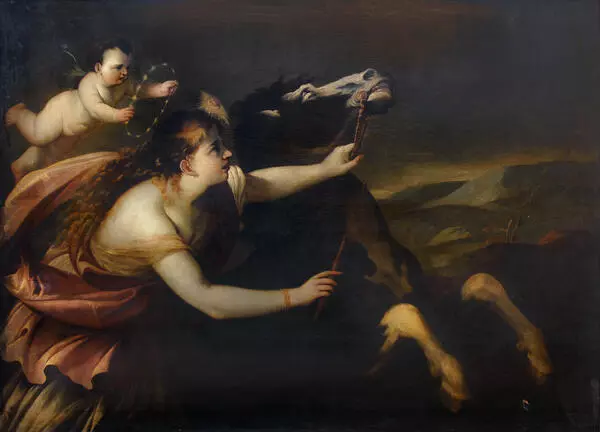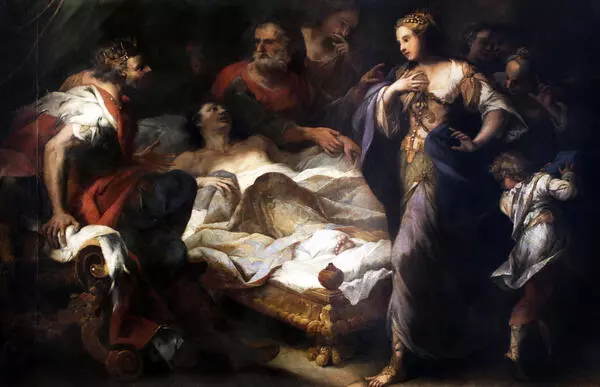In the Tula Museum of Fine Arts exposition, there is a unique, large-format canvas ‘Tarquinius and Lucretia’ by the famous Neapolitan painter of the 17th century Luca Giordano. The picture is created based on the plot of a dramatic ancient Roman story about Lucretia, the beautiful, virtuous, and devoted spouse of the Roman Patrician Lucius Tarquinius Collatinus, who was raped by Sextus Tarquinius, the son of the king of Rome, Lucius Tarquinius Superbus (Tarquinius the Proud). Unable to bear the shame, she stabbed herself with a dagger in front of her husband. According to legend, Lucretia’s death was one of the reasons for the rebellion raised by Lucius Junius Brutus. It led to the expulsion of Tarquinius the Proud, the fall of the power of the tyrants, and the establishment of the republic. These events are historical facts dated 509 BC in “History of Rome” by Titus Livius.
The painting describes the poignant moment of confrontation between two opposing forces, masculinism and feminism, vulnerability, and brute force. Luca Giordano described his heroes’ figures with a great skill of complex angles and impulsive movements, conveying the shine of expensive fabrics, whiteness of lace, and a lush baroque environment. Giordano created such grandiose canvases very quickly — he was a virtuoso ambidextrous. Due to his energy, speed, and outstanding efficiency, his contemporaries nicknamed him ‘Luca Fa-Presto’ from his youth, meaning ‘makes it fast, rapidly’. The artist and critic Alexandre Benoit spoke of Giordano’s remarkably light brush, which quickly covered hundreds of square meters of tireless painting.
Giordano was a brilliant master of frescoes, religious and historical compositions. His works characterized liveliness, harmonious color, a solid professional basis of drawing and painting, spectacular effects of light and shade, a “delirious” outrageous manner of artwork, and at the same time, the grace of academic art and freedom of ornamental style.
The painting entered the museum in 1919 from the estate of Rafael Pisarev in the village of Orlovka, Epiphan Uezd, Tula Governorate. It is recognized that the owner served in the Horse Guards Regiment together with Vladimir Chertkov, a friend of Leo Tolstoy, editor and publisher of his later works, leader of the Tolstoyan movement.
The painting describes the poignant moment of confrontation between two opposing forces, masculinism and feminism, vulnerability, and brute force. Luca Giordano described his heroes’ figures with a great skill of complex angles and impulsive movements, conveying the shine of expensive fabrics, whiteness of lace, and a lush baroque environment. Giordano created such grandiose canvases very quickly — he was a virtuoso ambidextrous. Due to his energy, speed, and outstanding efficiency, his contemporaries nicknamed him ‘Luca Fa-Presto’ from his youth, meaning ‘makes it fast, rapidly’. The artist and critic Alexandre Benoit spoke of Giordano’s remarkably light brush, which quickly covered hundreds of square meters of tireless painting.
Giordano was a brilliant master of frescoes, religious and historical compositions. His works characterized liveliness, harmonious color, a solid professional basis of drawing and painting, spectacular effects of light and shade, a “delirious” outrageous manner of artwork, and at the same time, the grace of academic art and freedom of ornamental style.
The painting entered the museum in 1919 from the estate of Rafael Pisarev in the village of Orlovka, Epiphan Uezd, Tula Governorate. It is recognized that the owner served in the Horse Guards Regiment together with Vladimir Chertkov, a friend of Leo Tolstoy, editor and publisher of his later works, leader of the Tolstoyan movement.
